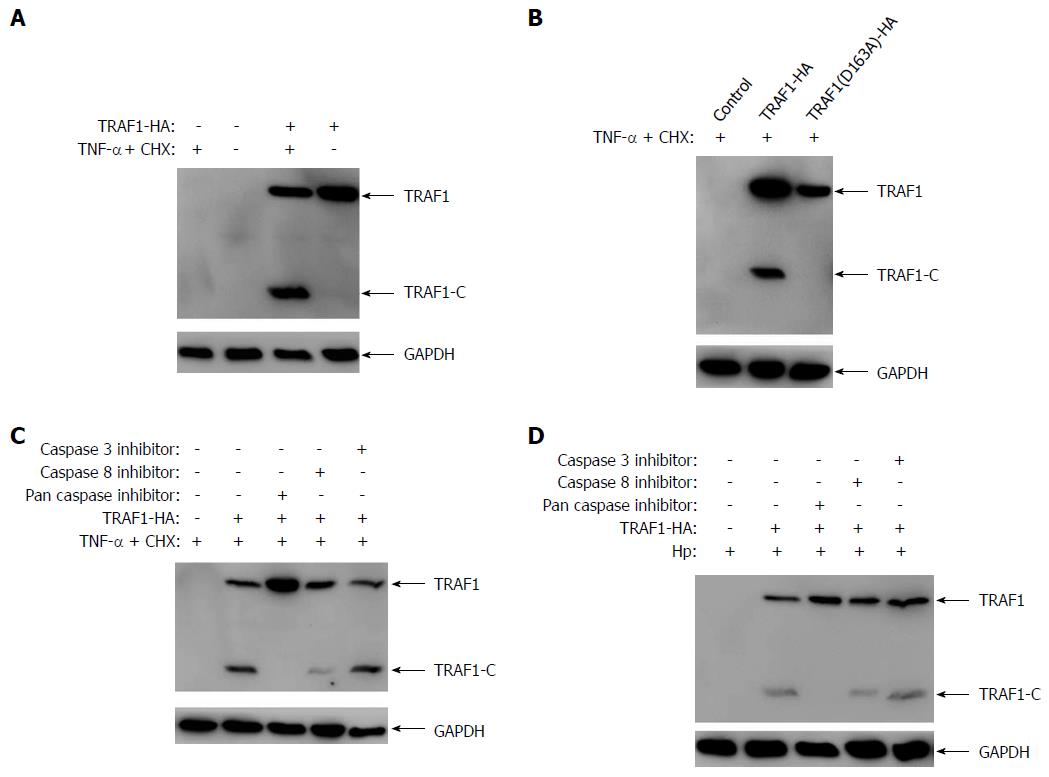Copyright
©The Author(s) 2016.
World J Gastroenterol. Dec 28, 2016; 22(48): 10566-10574
Published online Dec 28, 2016. doi: 10.3748/wjg.v22.i48.10566
Published online Dec 28, 2016. doi: 10.3748/wjg.v22.i48.10566
Figure 1 Tumor necrosis factor receptor-associated factor 1 is cleaved via caspase-8 in AGS cells infected with Helicobacter pylori.
A: AGS cells transfected with either HA-tagged tumor necrosis factor receptor-associated factor 1 (TRAF1) or empty vector were treated with the apoptosis inducer (0.3 μg/mL CHX and 80 ng/mL TNF-α) for 6 h, and the cleavage of TRAF1 was detected by western blotting; B: AGS cells were transfected with wild-type or D163A mutant of TRAF1 and analyzed for the cleavage of TRAF1 by western blotting; C: AGS cells transfected with the HA-tagged TRAF1 were pretreated with 20 μmol/L of Z-VAD-FMK, Z-IETD-FMK, or Z-YVAD-FMK for 30 min, followed by treatment with the apoptosis inducer for 6 h and then analyzed for the cleavage of TRAF1 by western blotting; D: AGS cells transfected with the HA-tagged TRAF1 were pretreated with 20 μmol/L of Z-VAD-FMK, Z-IETD-FMK, or Z-YVAD-FMK for 30 min, followed by infection with Helicobacter pylori strain NCTC11637 for 6 h and then analyzed for the cleavage of TRAF1 by western blotting.
- Citation: Wan XK, Yuan SL, Wang YC, Tao HX, Jiang W, Guan ZY, Cao C, Liu CJ. Helicobacter pylori inhibits the cleavage of TRAF1 via a CagA-dependent mechanism. World J Gastroenterol 2016; 22(48): 10566-10574
- URL: https://www.wjgnet.com/1007-9327/full/v22/i48/10566.htm
- DOI: https://dx.doi.org/10.3748/wjg.v22.i48.10566









